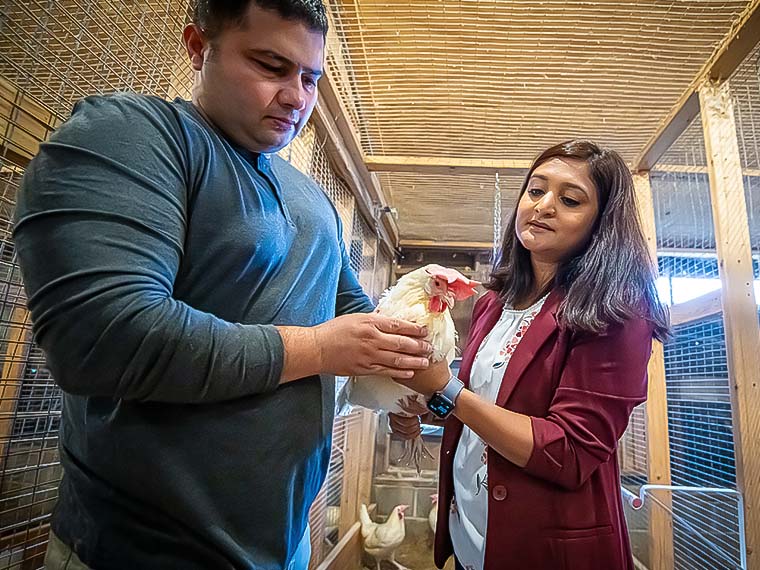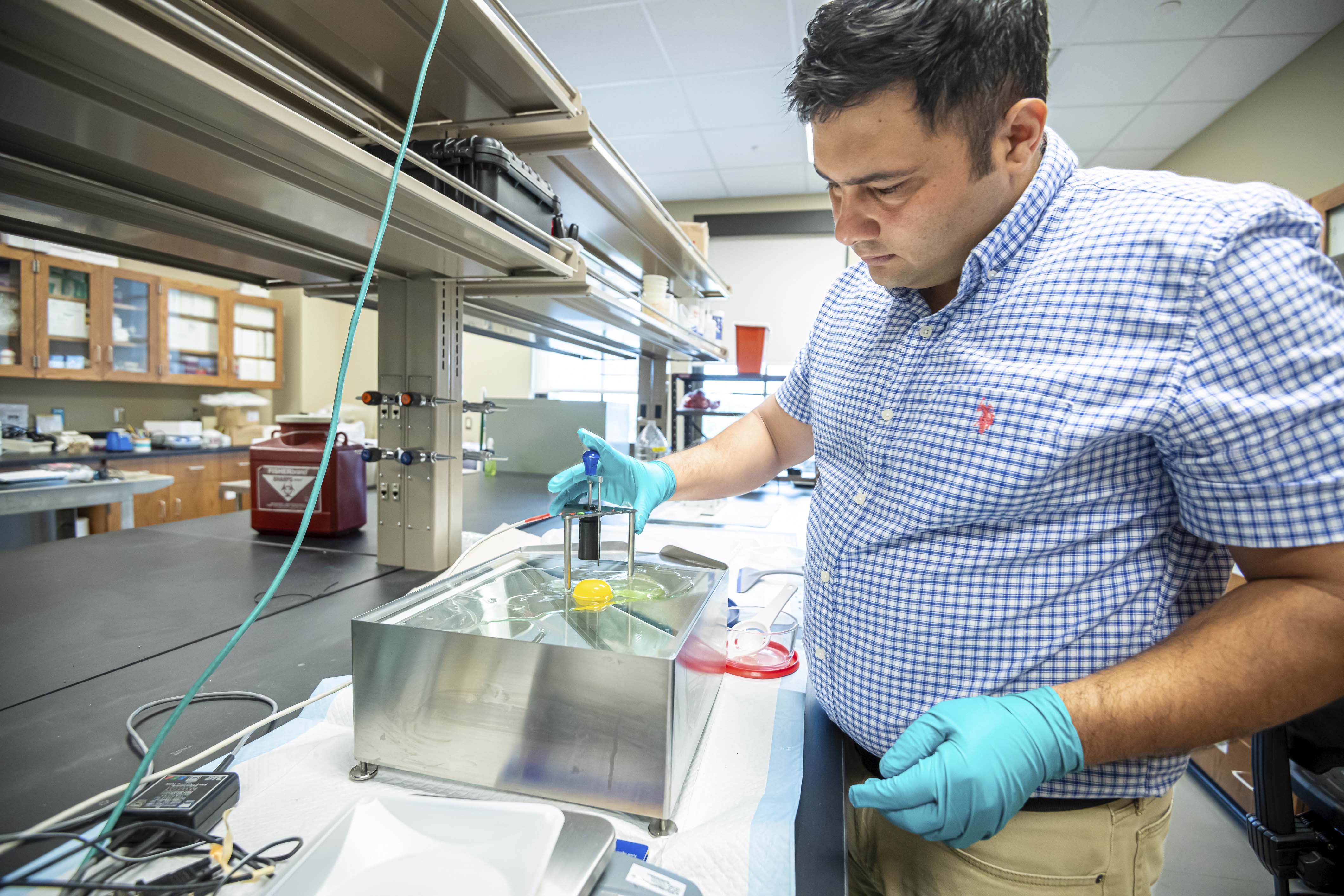The information presented on this page may be dated. It may refer to situations which have changed or people who are no longer affiliated with the university. It is archived as part of Mississippi State University's history.
Eggs are a part of many of our holiday staples from homemade dressings and casseroles to cookies, cakes, quiches, and pies. According to the USDA, Americans use nearly a dozen eggs during the Thanksgiving holiday and almost nine at Christmas. As we cracked, whisked, and whipped this essential ingredient this past holiday season, Mississippi Agricultural and Forestry Experiment Station (MAFES) researchers were working to ensure the eggs that find their way to our tables are as safe as possible.
Dr. Pratima Acharya Adhikari, associate professor in Mississippi State University's (MSU) Department of Poultry Science and MAFES scientist, is studying how probiotics can help reduce the risk of Salmonella enteritidis (SE) in egg layers.
"Controlling SE infections in laying hens is a critical aspect of reducing food safety concerns associated with the egg industry. Several feed additives have been tested and utilized in the layer industry with the motive of preventing pathogens like Salmonella," she said.
Her team studied if a Bacillus-based probiotic would reduce SE, which doesn't make chickens sick but is a foodborne pathogen that can sicken humans. Salmonella colonizes in the laying hen's ceca, or two pouches where the bird's small and large intestines join. The bacteria are also shed in feces.
The 21-day study, completed in spring 2023, at the Poultry Research Unit's Animal Biosafety Level-2 facility at the MAFES H.H. Leveck Animal Research Center included a week adaptation and two-day challenge followed by weekly sample collections for two weeks. Hens were randomized into a control group, and two groups were administered different levels of the same Bacillus-based probiotic.
"Our project goal was to reduce SE by at least a few microbes to one log, which indicates inactivating 90 percent of a target microbe with the microbe count being reduced by a factor of 10. We achieved a 0.9 log reduction," Adhikari explained.
Dr. Ishab Poudel, a research scholar at the Prestage Department of Poultry Science at North Carolina State University, participated in the research as a doctoral student at Mississippi State, graduating in August 2023. He explained the difference between prebiotics and probiotics in their role as an antibiotic alternative to reducing pathogens like Salmonella.
"Prebiotics are non-digestible carbohydrates that can improve the host health by stimulating the normal microflora. Probiotics are beneficial bacteria that can help restore the normal gut microbiota and function. Both increase good bacteria and prevent bad bacteria from colonizing," he explained.
Poudel said the work solidified his expertise in chicken microbiota, which is serving him well in his current role.
"My time at Mississippi State has given me an in-depth understanding of chicken microbiota, an area that has only recently been studied over the last decade. I'm fascinated because it's a new and exciting area," he said. "It is interesting to learn how we can optimize the microbiota of a bird that is already so rich in microorganisms and actually strengthen these microorganisms to prevent disease."
Adhikari said the next steps include continuing to study prebiotics and probiotics and also precision biotics, the newest alternative to fighting pathogens without the use of antibiotics.
"Precision biotics are the new category of feed additives and are carbohydrates with glycosidic linkages and size distributions selected specifically for their ability to modulate the microbiome pathways. They might have the potential to act as a dietary intervention to Salmonella," she said.
For now, she said the team has established a good model for testing feed additives.
"Now, I think we need to know what effects these additives have on different ages and stages of the birds and also see how long its efficacy in the feed will be once we supplement, especially in a commercial poultry house setting," she said.
Adhikari pointed out that while antibiotic alternatives will help reduce Salmonella in egg layers, other factors play a role.
"There is not one silver bullet to eliminate Salmonella. We need to continually monitor and test these available new opportunities while also better understanding the other factors that influence Salmonella in egg layers, including housing type environment, egg age, and breed of hen," she said.
This research was funded by Biomatrix International. Collaborators include Dr. Li Zhang, assistant professor in MSU's Department of Poultry Science and Dr. Aaron Kiess, Braswell Distinguished Professor-Layers at North Carolina State University.
There is not one silver bullet to eliminate Salmonella. We need to continually monitor and test these available new opportunities while also better understanding the other factors that influence Salmonella in egg layers, including housing type environment, egg age, and breed of hen.
Dr. Pratima Acharya Adhikari
Behind the Science

Pratima Acharya Adhikari
Assistant Professor
Education: B.S., DVM, Veterinary Science and Animal Husbandry, Tribhuvan University; M.S., Animal Nutrition, University of Manitoba; Ph.D., Poultry Science, University of Georgia
Years At MSU: 6
Focus: Nutrition, gut health, management, Salmonella and E. coli disease challenge models
Passion At Work: Understanding, serving, and helping the U.S. egg industry and producers through research based on production and nutrition work and that is applicable to large commercial farms and the poultry industry.


